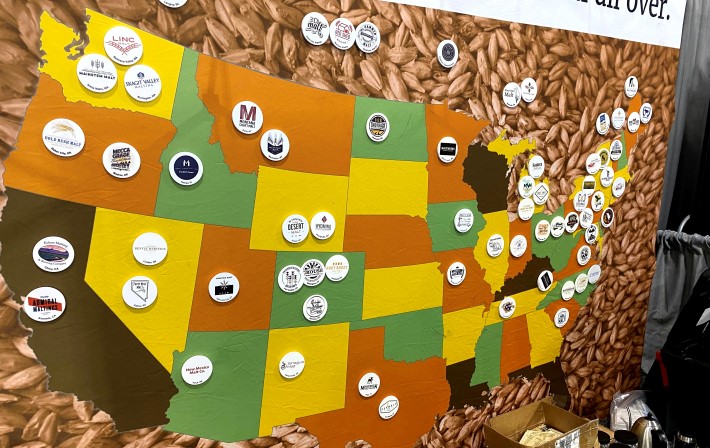
In honor of this week’s featured ingredient (last week it was yeast) here is the Craft Malsters Guild map that was on display during the Craft Brewers Conference in September.
Whimsy
“The Universally Recommended Timeless Institution Pub” is evidence that we need more blog posts written after a beer or three. Because, otherwise we might not get sentences like this, “That thing where it feels traditional and unchanged but has actually morphed slowly through the ages. So it’s just about on trend, but doesn’t feel trendy.” I wish somebody would say something like that about me.
Baby steps
Lawson’s Liquids is renaming two beers. Say goodbye to Knockout Blonde and Maple Nipple.
Selling (out)
I’ve always wondered about what the difference might be between selling and selling out. Entrepreneurs start businesses every day, and quite often the business plan includes an exit strategy.
Author Tom Acitelli used the word movement on more than a third of the pages in the first edition of “The Audacity of Hops.” I get it (this is not a “Succession” shout out) — drinkers sign on to a movement to stick it to the man and then a brewer who is supposed to be leading this movement sells (out) to the man.
But that’s not every brewery operator’s story. Nonetheless, Dave Infante’s conversation with with Dan Ozzi, author of “Sellout: The Major-Label Feeding Frenzy That Swept Punk, Emo, and Hardcore (1994-2007),” has several “hmmm, been there, done that” sentences for craft beer fans. [Subscription required to read the entire interview.]
As the title of the book suggests, it is about one Punk era, but there is a longer history of calling artists sellouts.
Cellaring
Alistair Reece writes about his ritual of buying a 6-pack of Sierra Nevada Celebration Ale, drinking a couple and setting the rest back for the future. In our family, we used to save a single bottle each year to have when a fresh batch was released. We quit, primarily because, unlike Reece, we prefer the fresh version.
Bigfoot Barleywine, on the other hand, we are happy to cellar. The work of oxidation that Reece appreciates in Celebration we enjoy in Bigfoot. Sadly, we are almost out of pre-2008 vintages. That’s when Sierra Nevada began using pry-off bottle caps instead of twist offs. The difference between 2007 and 2008 is greater than the one between 2010 and 2021. Which, in either case, is fine.
Rauchbier
The anti-IPA? I don’t get it. I like Bamberg, the town of Grodzisk, my Grodziskie T-shirt, hanging out at Live Oak, the smell of alderwood on a Juneau beach, and whatever other objects I might associate with smoked beers. Oh, and smoked beers themselves. But the anti-IPA? I like IPA. Is this similar to liking both Son Volt and Wilco?
Malt
Barley farmer or maltster: “Malt is brewing’s most essential and overlooked ingredient.”
Hop farmer: “Hops are is brewing’s most essential and overlooked ingredient.”
Yeast provider: “Yeast is brewing’s most essential and overlooked ingredient.”
John Palmer: “Water is brewing’s most essential and overlooked ingredient.”
And because beer blogging is still dead
“For those of you unfamiliar with the term bloggers, please ask your AP English teacher for guidance.”
– Via The Atlantic
Stan Hieronymus: Time, place, and people are brewing’s most essential and overlooked ingredient. “Everything is everywhere, you can make it somehow better in the simplest of ways, and we shouldn’t be afraid to talk about the importance of a brewer’s intent.” I feel like I should have been able to find a direct quote from you (or a quote from Amy Trubek that would suffice), but I couldn’t. I think though, that one might be able to make this argument.
Indeed.